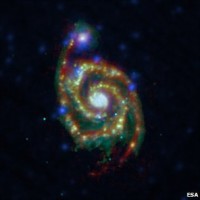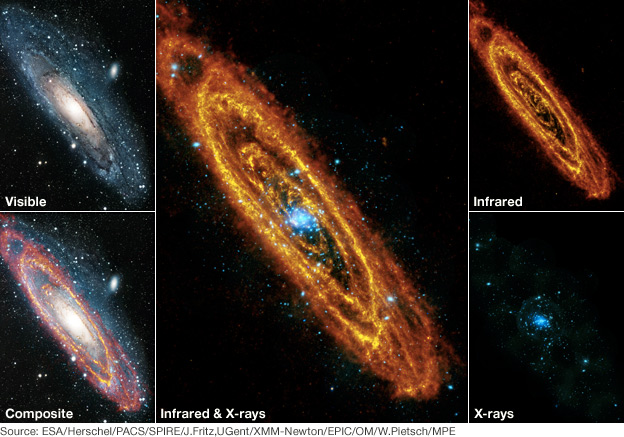
As I walked in the door this evening, I was met with the effusive strains of my brother telling me that I just had to look at these pictures. He’d been watching Stargazing Live on the BBC, you see. The pictures in question are the rather excellent shots taken by the Herschel and XMM-Newton space telescopes, which show the birth and death of stars in the galaxy next door to ours, Andromeda.
Herschel captures images of all things cold, such as gas and dust, which gather when stars form. It’s an infrared sensor.
XMM-Newton, on the other hand, captures x-rays of things that are hot. So its shots are of stars as they meet their fiery ends.
Combine the two sets of images and you have a glorious composite picture of the life cycle of stars in a galaxy.
At 3.5 metres in diameter (that’s two-and-bit of me), the mirror in the Herschel observatory is the largest ever sent into space. And in this case, the resolution really is crucial. Without its monstrous size, it wouldn’t be able to capture long wavelength light, or far-infrared. The human eye alone can’t detect it. Without the mirror, we wouldn’t be able to see the infrared images of the galaxy so clearly.
And they’re pretty stunning.
(Pictures from European Space Agency via BBC, and headsup to my brother, of course.)






